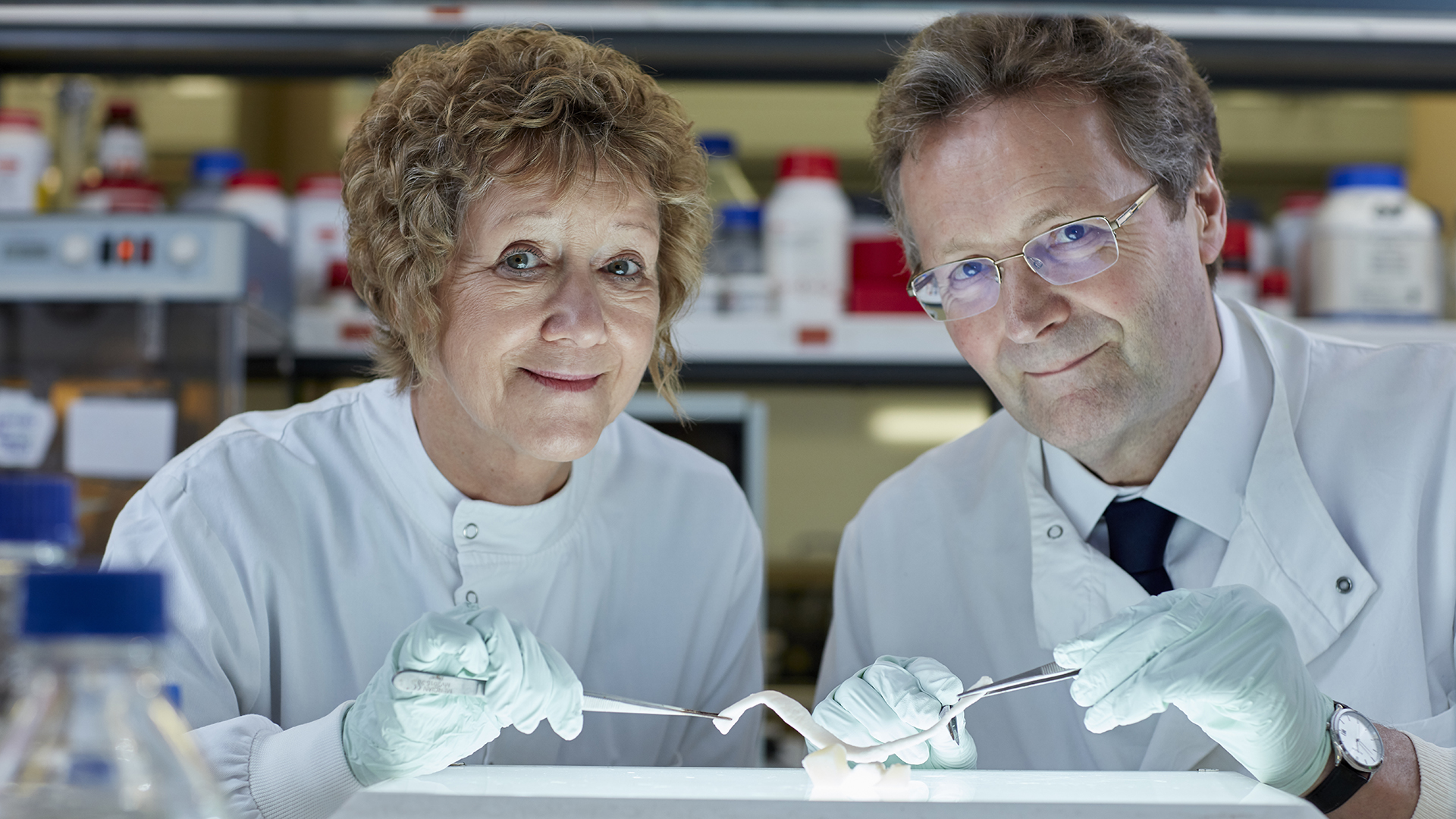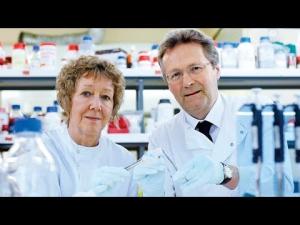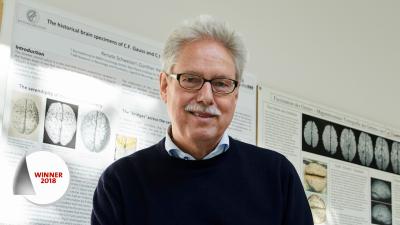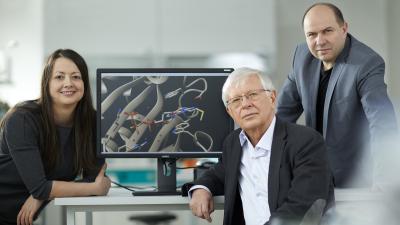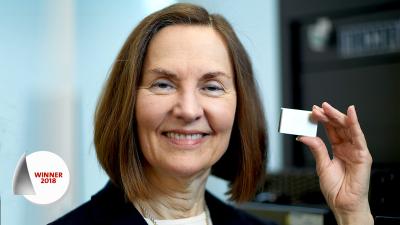Eileen Ingham and John Fisher CBE
Donor tissue without rejection
Finalists for the European Inventor Award 2018
Regenerative medicine has a new option for soft tissue replacements thanks to the British husband-and-wife team of immunologist Eileen Ingham and bioengineer John Fisher, both of the University of Leeds. Providing a safe alternative for skin, tendon and heart valve transplants, their patented process prevents donor tissue from being rejected by the recipient's immune system.
The human body naturally rejects foreign objects - even restorative inserts such as medical implants. Titanium has proven to be a biologically tolerable material for dental implants and prostheses, as it causes no immune system response. But replacing soft tissues such as skin or tendons has remained a challenge in restorative medicine for decades.
However a marriage of biology and physics - in the form of a husband-and-wife research team - has come up with a new solution. The physical expertise from Fisher's engineering background, complemented by Ingham's biological know-how, resulted in a patented decellularisation process that naturally integrates implant tissue into the recipient's body.
Marketed as dCELL technology by Tissue Regenix, the University of Leeds spin-off company the couple founded, the invention solves the problem of tissue transplant rejection. Developed at the University of Leeds over the course of more than a decade, it involves washing donated human or animal tissue to remove almost all DNA and cellular material. The end result is a biological scaffold, on which new tissue can be grown with the exact same properties as the tissue it will repair or replace.
Societal benefit
Increased lifespans, along with an increase in chronic illnesses such as diabetes, heart disease and obesity, which take a heavy toll on the human body, mean that people require restorative medicine more often. Serving this demand, Ingham and Fisher's patented decellularisation technology is a way to repair or replace damaged soft tissues and organs that is expanding in possibilities.
The greatest impact so far has been in the treatment of diabetic ulcers. An estimated 415 million people worldwide have diabetes, with 6% of them suffering a foot ulcer or wound that could lead to amputation or even death. The technology has helped create a decellularised human skin treatment to repair wounds associated with diabetes. It has proven highly popular since its launch in 2014 in Europe and the United States.
Cardiovascular diseases are another promising area for treatment. Replacement heart valves - one of Fisher's areas of speciality - are made from human donor valves and removed of their cellular material via the decelluralisation technique. After successful clinical trials in Brazil over a period of ten years, the technology is progressing through the German regulatory approval processes for use in the EU.
The possibilities for Ingham and Fisher's creation are breathtaking. Their company has developed replacement tendons, made from either porcine or human donors, which are used for regenerative orthopaedic treatments. EU clinical trials are currently under way, with the company expecting CE mark approval and European availability of the first orthopaedic tendons in late 2018.
Economic benefit
In order to bring their patented invention to market, Ingham and Fisher co-founded Tissue Regenix in 2006. The company launched its first product in 2014. The decellularised human skin treatment is available in the United States as DermaPure and the UK as dCELL dermis. On the strength of these products, the company's annual revenues skyrocketed from EUR 6 700 in 2014 to EUR 1.6 million in 2016. According to the group’s latest annual results, revenues increased to EUR 6 million in 2017.
Tissue Regenix operates in a wound care market currently estimated to be worth about EUR 16 billion and forecast to grow, reaching EUR 19 billion by 2022.
Once approved, a heart valve based on the inventors' technology will address an ever-increasing need. The number of people diagnosed with heart failure worldwide is projected to grow by 46% by 2030. This has created a global market for heart valve repair and replacement devices that is expected to be worth an estimated EUR 6.5 billion by 2021.
How it works
Regenerative medicine has long been used successfully to repair or replace damaged or diseased human tissue. What Ingham and Fisher have achieved is the possibility to create biological replacement tissue that is less likely to be rejected by the human body.
Their decellularisation process works by gently washing tissue donated from animals or humans to produce an organic structure that has the same physical form and function as the original tissue but contains hardly any DNA or cells.
The decellularisation process, protected by key European patents, results in biocompatible scaffolds. This scaffold structure can then be incorporated into a patient using the body's own natural biological repair mechanisms.
The inventors' "acellular biological scaffolds" have two key advantages. Firstly, tissue grown on these scaffolds regenerates. Secondly, because they are devoid of cells, they do not trigger an adverse immune response, which often occurs when foreign biological material is introduced into the human body.
The platform technology has the potential to be used for a range of different types of implant. It has already proven effective for creating replacements of soft body structures, such as skin, heart valves and tendons. It is also being developed for applications in the area of bone regeneration.
The inventors
Eileen Ingham first arrived at Leeds University in 1972 as an undergraduate. Today she is Professor of Medical Immunology in the university's Faculty of Biological Sciences. She has been recognised by the Suffrage Science scheme for championing women in science and is listed as the inventor on ten patents. Her honours include a Queen's Anniversary Prize for Higher and Further Education (2012) and a Woman of Outstanding Achievement award from the UK Resource Centre for Women in Science, Engineering and Technology (2011).
John Fisher was made a Commander of the Order of the British Empire (CBE) in 2012 in recognition of more than 40 years of medical engineering research, innovation and development. Fisher gained his PhD in bioengineering from Glasgow University and joined the University of Leeds in 1988 as Lecturer in Biomedical Engineering. He served as a Pro-Vice-Chancellor and Deputy Vice-Chancellor at the University of Leeds for 15 years until he stepped down in 2016.
Ingham and Fisher's professional partnership began at the University of Leeds in 1992. They married in 1995.
Did you know?
Ingham and Fisher's partnership has achieved far more than merely the invention of their decellularisation process. They have worked together on a number of other innovations and co-founded the University of Leeds' Institute of Medical and Biological Engineering (iMBE), which is globally recognised for its research and innovation in medical engineering.
Fisher leads an iMBE flagship programme called "50 active years after 50", which focuses on developing new medical devices and therapies to allow people to be as active during their second half-century as they were in their first.
Ingham and Fisher are not the first married couple to be recognised at the European Inventor Award. Erwin and Ingeborg Hochmair were finalists in 2014 in the "Lifetime achievement" category for their cochlear implant to restore hearing. Elvira Fortunato and Rodrigo Martins were finalists in 2016 in the "Research" category for their microchips made of paper.
Media gallery
Contact
European Inventor Award and Young Inventors Prize queries:
european-inventor@epo.org Subscribe to the European Inventor Award newsletterMedia-related queries:
Contact our Press team#InventorAward #YoungInventors
